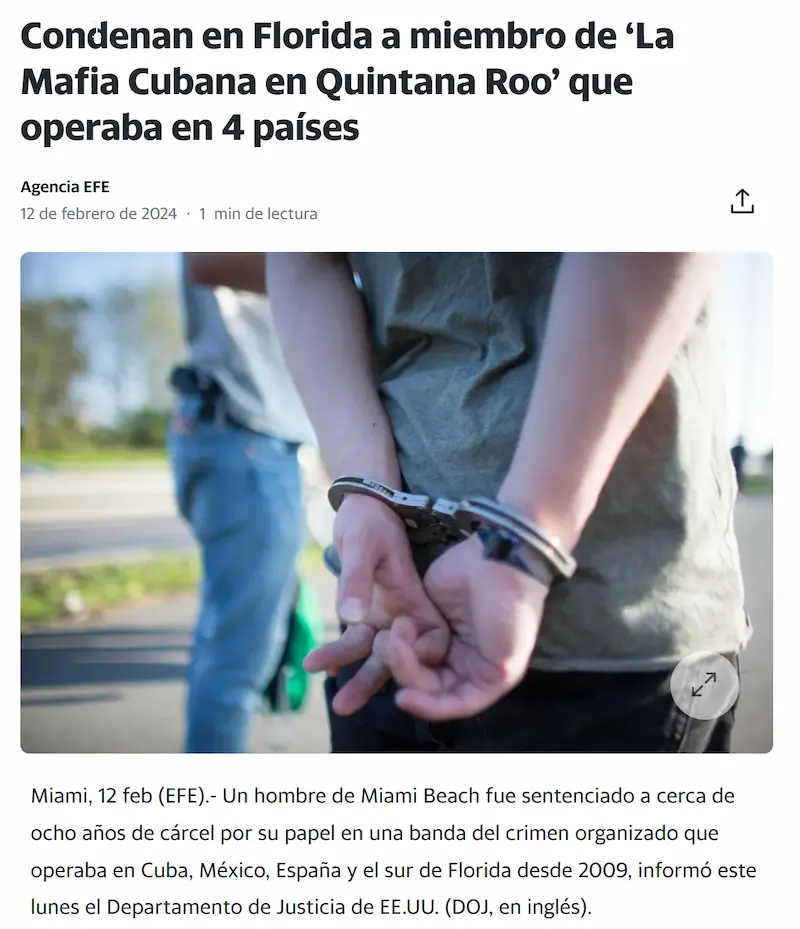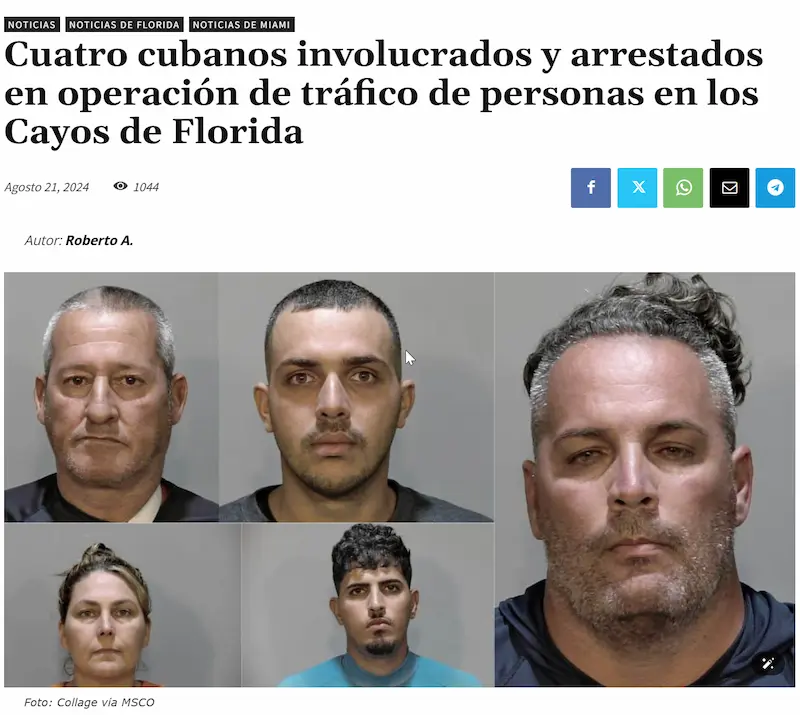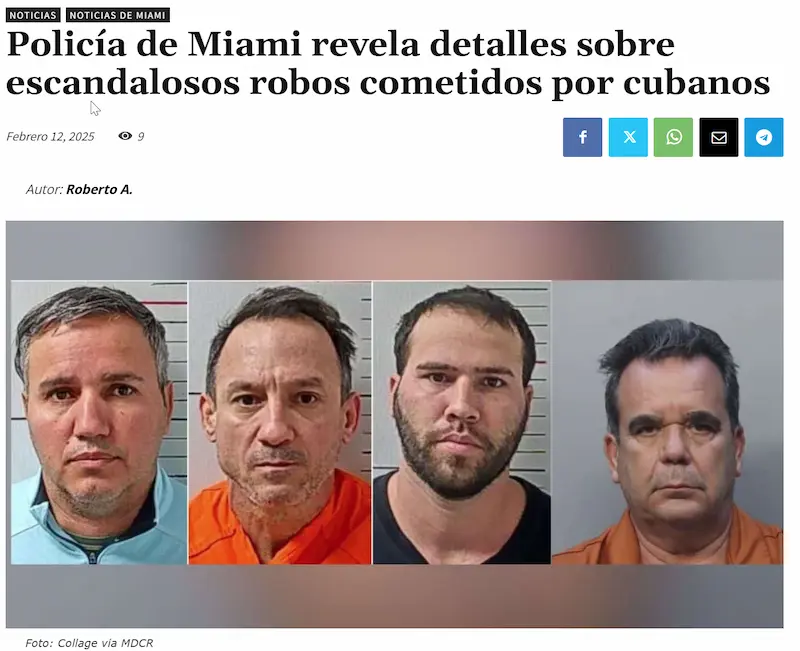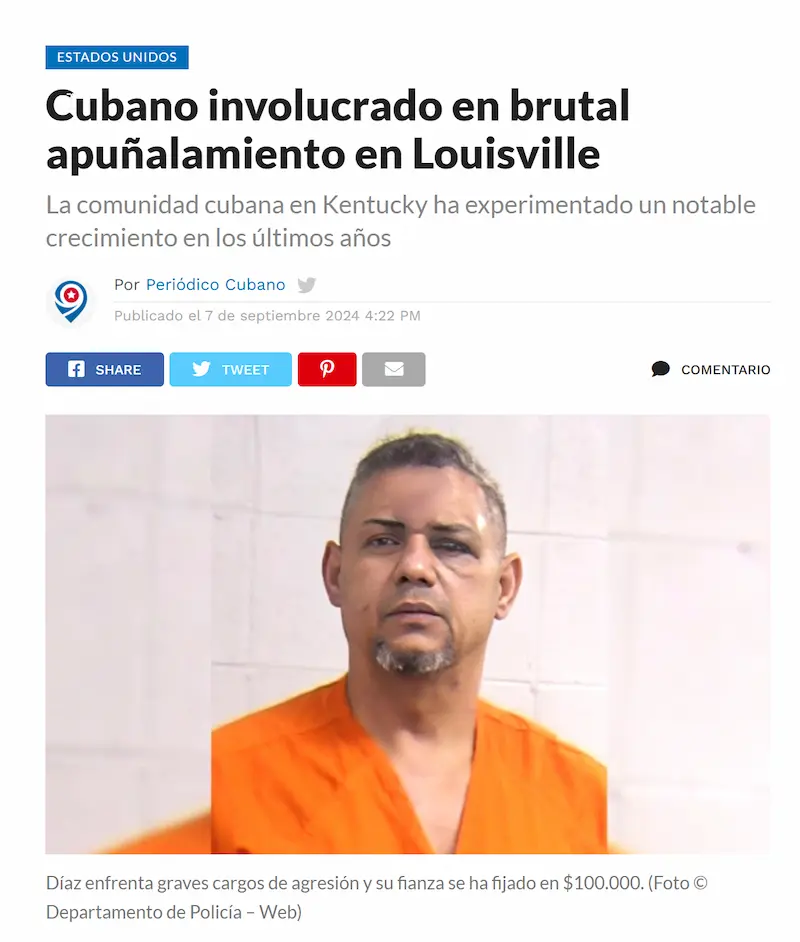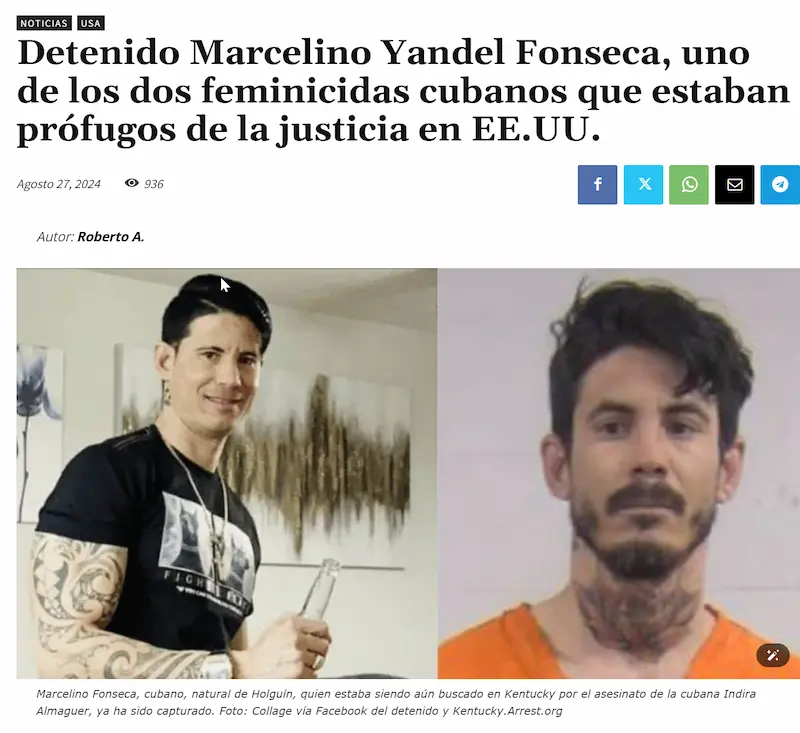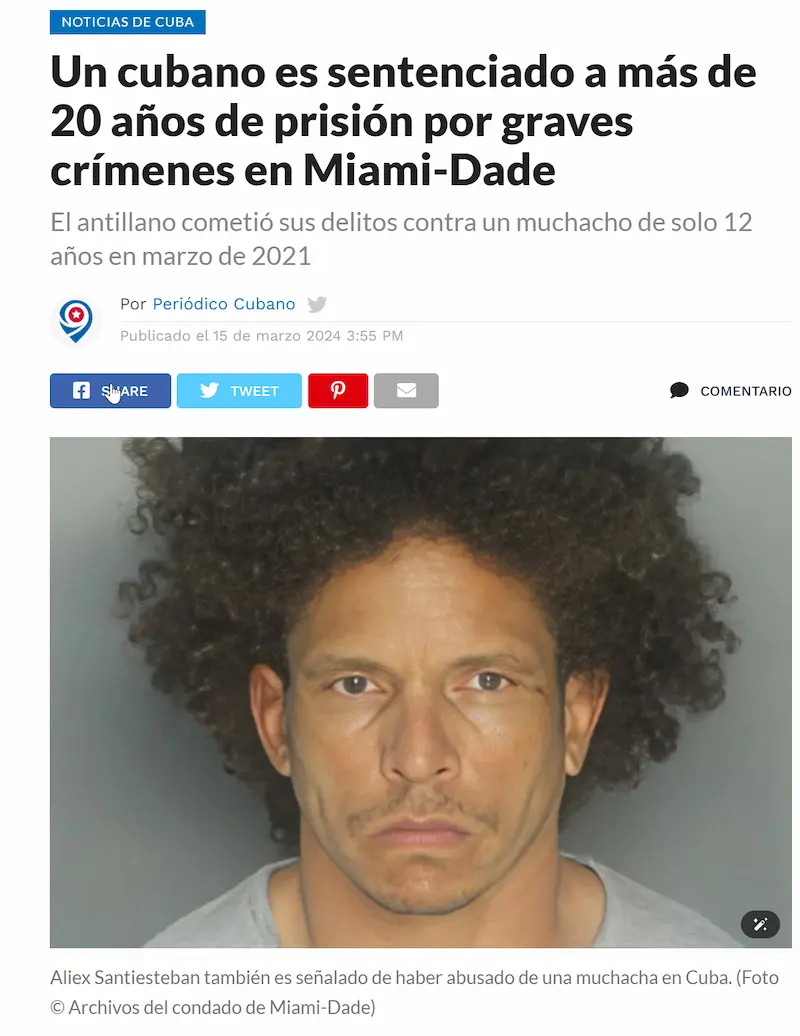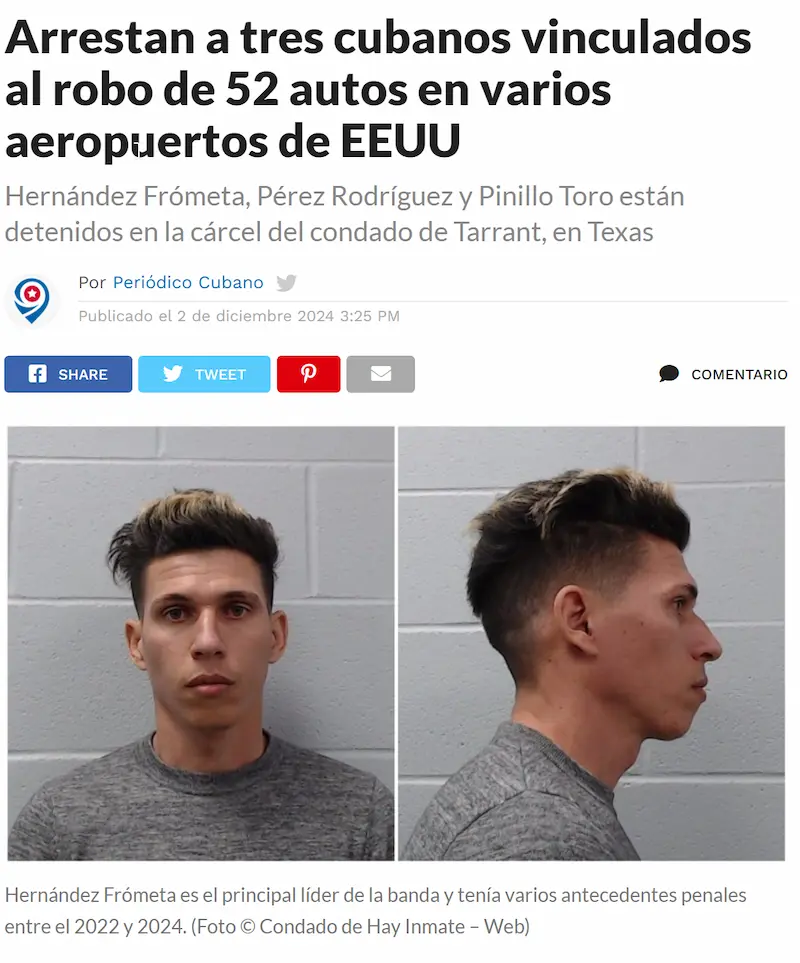|
Getting your Trinity Audio player ready... |
Tabla de Contenido/ Table of Contents
- 1 Cuban Outrage Erupts Over Heinous Crimes Committed by Cuban Nationals in Texas: A Betrayal of Trust and Struggle
- 1.1 Crime Details: A Digital Trail of Horror
- 1.2 Community Response: Anger and Disillusionment
- 1.3 A Betrayal of the Struggle: A Stain on Hard-Earned Privileges
- 1.4 Read More on Cuban Migration History
- 1.5 1. Pre-Cuban Revolution (1900-1958)
- 1.6 2. Post-Cuban Revolution (1959-1962): The First Major Exodus
- 1.7 3. The 1960s: The Golden Exile and Discrimination in Miami
- 1.8 4. The 1970s-1980s: New Migration Waves and Changes
- 1.9 5. Post-Cold War (1990-2021)
- 1.10 6. The Pro-Open Borders Migration Wave Under Biden (2021-Present)
- 1.11 Migrant Profile
- 1.12 Cases of Heinous Crimes and Their Media Impact
- 1.13 Factors Explaining These Cases
- 1.14 A Complex Phenomenon
- 1.15 Legal Implications and Ongoing Actions
- 1.16 Call to Action: Vigilance and Unity
- 1.17 Conclusion
Cuban Outrage Erupts Over Heinous Crimes Committed by Cuban Nationals in Texas: A Betrayal of Trust and Struggle
The recent arrest of a Cuban couple in Odessa, Texas, has sparked widespread disgust and condemnation—not only due to the unspeakable nature of their crimes but also because of the profound betrayal of a community that has fought tirelessly for dignity and opportunity in the United States. Leysuin Lara Hernández (23) and Cleidet Pacheco Peraza (22) face charges including sexual assault of a minor, possession of child pornography, and distribution of exploitative material involving their one-year-old daughter. The case has struck a sensitive chord, highlighting both the vulnerability of children and the moral responsibility of those granted refuge to uphold the values of their adopted country.
Crime Details: A Digital Trail of Horror
At the end of December 2024, the National Center for Missing & Exploited Children detected an explicit video shared via TikTok, triggering a multi-agency investigation. Authorities traced the material back to Pacheco Peraza’s email and social media accounts, uncovering a horrific reality: the couple had allegedly sexually abused their infant daughter dozens of times, recording the acts and even sending videos to relatives abroad. During interrogations, Pacheco Peraza confessed to at least 50 instances of abuse, while Lara Hernández was implicated for active participation. The child, fortunately rescued, is now under state protection.
Community Response: Anger and Disillusionment
The Cuban-American community, particularly in Texas, has expressed deep outrage. Many emphasized that such crimes tarnish the legacy of Cuban immigrants who escaped oppression and contributed to U.S. society.
“This is a betrayal of everything our community has worked for,” declared a Miami-based advocacy group. “The privileges we have earned—after decades of resilience—are not a license to commit atrocities.”
Social media platforms have been flooded with demands for justice, highlighting collective pain over the victim’s innocence and the perpetrators’ exploitation of trust.
A Betrayal of the Struggle: A Stain on Hard-Earned Privileges
Cuban nationals in the U.S. have historically benefited from policies such as the Cuban Adjustment Act, which provides fast-tracked residency for those fleeing political persecution. However, this case distorts that legacy.
Advocates stress that individuals like these undermine the credibility of asylum seekers and fuel harmful stereotypes. Members of the so-called historic exile expressed their dismay:
“Their actions dishonor the sacrifices of those who came before them.”
“We must condemn this unequivocally.”
Read More on Cuban Migration History
You can find the full article “Six Decades of Cuban Migration to the United States” on the Voice of America website. Written by Yeny García and published on February 17, 2023, the article explores key moments in the Cuban exodus to the U.S., a journey marked by the pain of separation and the hope for a better future.
📖 Read the full article here: Six Decades of Cuban Migration to the United States
1. Pre-Cuban Revolution (1900-1958)
First Waves:
- Between 1900 and 1958, Cuban migration to the U.S. was modest, mainly consisting of temporary workers, entrepreneurs, and students.
- Miami, Tampa, and New York hosted small Cuban communities, primarily tied to the tobacco and sugar trade.
- During the 1950s, some opponents of the Fulgencio Batista regime emigrated, including future political exiles.
2. Post-Cuban Revolution (1959-1962): The First Major Exodus
1959-1962: The Departure of the Upper Class and Opponents
- After the Revolution led by Fidel Castro on January 1, 1959, thousands of Cubans linked to the Batista regime, entrepreneurs, landowners, and professionals fled the island.
- 1960-1962: The U.S. government, under the yet unofficial Cuban Adjustment Act, began accepting refugees as part of its anti-communist policy.
- Operation Pedro Pan (1960-1962): More than 14,000 Cuban children arrived alone in the U.S. under a program backed by the CIA and the Catholic Church, aimed at preventing “communist indoctrination”.
3. The 1960s: The Golden Exile and Discrimination in Miami
Key Context:
- Between 1960 and 1973, nearly 700,000 Cubans arrived in the U.S., primarily settling in Miami.
- Cuban Adjustment Act (1966): A law granting legal status and a path to residency for Cubans, favoring them over other Latin American migrants.
Discrimination and Xenophobia in Miami:
Despite federal government support, Cubans faced local rejection. Businesses in Miami displayed racist signs that read:
“No Negroes, No Dogs, No Cubans.”
Causes of Racism:
- Job competition: Many middle- and upper-class Cubans accepted low wages, causing resentment.
- Cultural differences: A stark contrast with Miami’s then-majority white Anglo-Saxon population.
- Structural racism: Signs reflected Southern segregation, combining anti-Black racism and Latino xenophobia.
Miami’s Transformation:
- The Cuban exiles, mostly white and educated, rebuilt Miami’s economy, creating enclaves like Little Havana.
- Despite initial hostility, their political and economic influence rapidly expanded.
4. The 1970s-1980s: New Migration Waves and Changes
- Freedom Flights (1965-1973): A U.S.-Cuba agreement allowing family reunification brought 260,000 Cubans to the U.S.
- Mariel Boatlift (1980): 125,000 Cubans left Mariel’s port. Fidel Castro included prisoners and “undesirables,” leading to stigmatization of Marielitos in the U.S.
5. Post-Cold War (1990-2021)
- Balseros Crisis (1994): After the collapse of the USSR, Cuba faced a crisis. The U.S. implemented the “wet foot/dry foot” policy.
- Normalization and end of special privileges: In 2017, President Obama eliminated the “wet foot/dry foot” policy, equalizing Cuban migrants’ treatment with other groups.
6. The Pro-Open Borders Migration Wave Under Biden (2021-Present)
Causes of Migration:
Cuba’s Economic Collapse:
- Worsened by the pandemic and government mismanagement (e.g., failed 2021 currency unification), leading to extreme shortages of food, medicine, and fuel.
Political Repression:
- July 11, 2021 (11J) protests and subsequent demonstrations led to a wave of arrests and persecution of dissidents.
Opening of Migration Routes:
- Increase in travel to Nicaragua (no visa required for Cubans since 2021), enabling dangerous land routes to the U.S. through the Darién jungle.
Migrant Profile
- “No-Future” Generation: Young adults under 40 with no memory of pre-revolutionary Cuba, but exhausted by decades of crisis.
- Racial Diversity: A higher percentage of Afro-Cubans compared to previous migration waves, reflecting economic marginalization on the island.
- Extreme Desperation: Many sell all their belongings to pay smugglers (coyotes), risking their lives on routes like the Darién jungle or in precarious rafts.
Cases of Heinous Crimes and Their Media Impact
While most Cuban migrants seek legal integration, a minority has been linked to violent or shocking crimes, fueling sensationalist headlines.
Human Trafficking and Exploitation:
- In 2023, a group of Cubans was arrested in Florida for running a sex trafficking network, forcing newly arrived women into prostitution.
- Cases of Cuban-American “coyotes” abandoning migrants in remote areas, such as the 2022 incident in Texas, where 12 Cubans died of dehydration.
Interpersonal Violence and Settling Scores:
- In Miami, gang conflicts among recent arrivals over control of illegal markets (e.g., fake work permit sales).
Unexpected Crimes with a Traumatic Background:
- Violent attacks linked to mental disorders exacerbated by traumatic experiences in Cuba or during migration.
Drug Trafficking and Organized Crime:
- Increase in Cubans being recruited by Mexican cartels to transport drugs into the U.S., taking advantage of their desperation to pay smuggling debts..
Factors Explaining These Cases
Historical Trauma:
- Growing up in a repressive system fosters distrust in institutions and normalizes violence as a survival tool.
Displacement and Marginalization:
- Newly arrived migrants often lack support networks, access to mental health services, or stable employment, making them vulnerable to crime.
Influence of Tactics Learned in Cuba:
- Some replicate black market practices (e.g., “jineterismo” or fraud) to survive in the U.S.
Exploitation by Criminal Networks:
- Cartels and Cuban-American mafias take advantage of migrants’ precarious legal situations to coerce them into criminal activity.
A Complex Phenomenon
The crimes committed by some Cuban migrants do not represent the entire community but reflect the scars of 65 years of authoritarianism, poverty, and desperation. While these cases remain a minority, they expose a harsh reality. The solution lies in addressing both Cuba’s crisis and migrants’ socioeconomic integration in the U.S., ensuring mental health support and justice.
Legal Implications and Ongoing Actions
The couple remains in ICE custody, with bail set at $180,000, while state and federal agencies work to build a solid case. Their arrest is part of a broader January 2024 operation targeting child exploitation in West Texas.
Legal experts anticipate harsh sentences, including lengthy prison terms and eventual deportation. Authorities continue gathering evidence and urge anyone with information to come forward.
Call to Action: Vigilance and Unity
This tragedy underscores the need for:
Stricter Oversight:
- Enhancing digital surveillance to quickly detect exploitative content.
Community Vigilance:
- Encouraging families and neighbors to report suspicious behavior to protect the most vulnerable.
Support for Survivors:
- Expanding resources to help abuse victims heal and rebuild their lives.
Conclusion
As the Cuban-American community reels from this betrayal, the case serves as a grim reminder: the fight for justice and moral integrity never ends. It is a call to unite against evil, protect children, and honor the sacrifices of those who paved the way—by holding perpetrators accountable, regardless of nationality.
As the legal process unfolds, hope remains that horrors like these will galvanize society to protect its youngest members and preserve the hard-earned dignity of immigrant communities.
⚠️ This article contains sensitive content related to child abuse. Resources for reporting exploitation or supporting survivors can be found at the National Center for Missing & Exploited Children (NCMEC) or through the National Child Abuse Hotline: 1-800-4-A-CHILD.
Want more post like this?
Head over to our homepage for the latest updates from South Florida and beyond:








